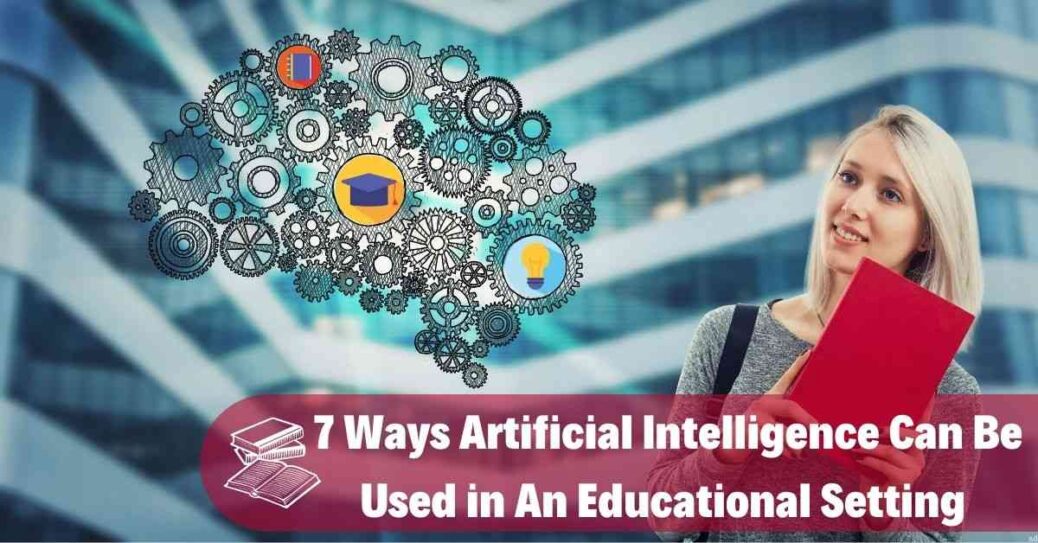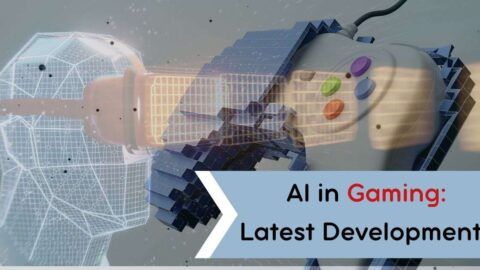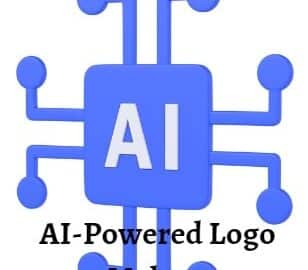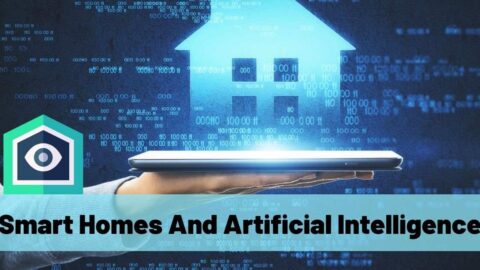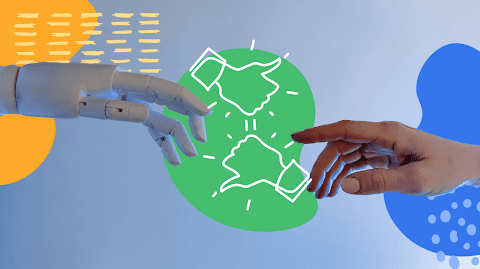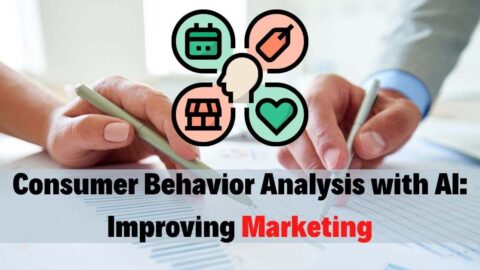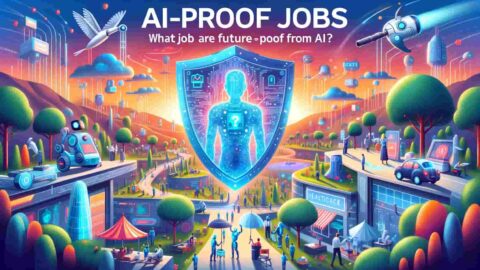7 Ways to Use Artificial Intelligence in Education
According to the Artificial Intelligence Market in the US Education Sector report, the adoption of artificial intelligence in education in the U.S. has increased by 47.5% from 2017 to 2021. Other studies suggest that the global AI in education will reach $5.80 billion by 2025. In this article, we’re going to discuss seven ways how artificial intelligence can be used in the education sector from e-learning to personalized learning.
Table of Contents
Granted, the COVID-19 pandemic propelled e-learning. And that’s where AI thrives. The application of AI in education hasn’t just transformed textbooks into video lectures or the introduction of online tests. Technology has overhauled the entire approach to education.
Read on to discover the application of AI in an education setting.
1. Artificial Intelligence is Helping Educators Recognize Learning Disabilities
The surefire way educators can come up with ways to support students with learning disabilities is to identify what kind of disability a learner has. Unfortunately, the current testing mechanisms aren’t effective enough to identify learning disabilities like dyscalculia or dyslexia.
The good news is that scientists are working round the clock to come up with new AI systems that help educators effectively test and determine some of these hard-to-identify conditions. Once the conditions are identified, educators can take advantage of the available resources to support students with learning disabilities.
2. Artificial Intelligence in Education Can Help Students Give Reliable Feedback
When teaching a large number of students, a teacher may find it challenging to slow down to help slow-learning students or those with learning disabilities.
Artificial Intelligence can help students give and receive reliable feedback that can help educators come up with learning materials that suits all students with different learning abilities. Artificial Intelligence in education allows students to learn the material at their own pace.
3. Artificial Intelligence in Education Provides Valuable Data to Educators
Without data, teachers cannot determine classroom success. Artificial intelligence has enabled quick access to valuable data that can help educators identify weaknesses among students.
Teachers can use the data to determine areas where teaching is ineffective or subjects that are challenging to the majority of students. The data can also shed some light on the performance of students with learning disabilities versus that of their peers.
4. Artificial Intelligence Has Enabled Globalization of Education
Students can now learn from anywhere, anytime thanks to artificial intelligence. Technology has eased students of the need to commute to classes or travel to be educated. These days, students can stay caught up with schoolwork through specialized education software from the comfort of their homes. Using AI in education has helped to reduce the cost of education making it affordable to rural students and those in low economic areas as well.
5. Personalized Learning
Creating learning materials based on an individual student’s needs, which is called personalized learning, is one of the challenges educators have faced for many years. Personalized learning, has enabled the development of special education programs with the pace of learning and the instructional approach are tailored to meet the needs of different learners based on their learning abilities.
The learning programs are developed based on learning preferences and the specific interests of different students. A number of studies show that personalized learning can improve students’ performance regardless of their learning abilities. AI in education allowed personalized learning to be more common and easier to achieve.
6. Adaptive Learning
Another way AI can be used in an educational setting is through adaptive learning. Researchers suggest that artificial intelligence in education can track the progress of each individual student and adjust the courses or inform the teacher about materials students are struggling to understand.
7. Artificial Intelligence in Education Helps with the Automation of Tasks
AI is also helping to automate administrative tasks hence relieving teachers of these boring tasks. Apart from teaching and management the classroom environment, teachers have for many years had to manage other administrative and organizational tasks. Aside from creating and evaluating homework, grading tests, and reading essays, teachers are also tasked with filling different paperwork, organizing learning resources, making regular progress reports, and more.
A recent survey has shown that teachers spend 43% of their time on teaching, 13% on planning lessons, 11% on making tests, and 7% on managing administrative work. This implies that teachers spend more time on non-teaching tasks. With AI, all these tasks can be automated.
Additional Ways How AI is Shaping Education
Tutoring Support Outside the Classroom
Parents don’t have to struggle to help their teenagers with algebra since AI provides support to their children with their homework or test preparations through e-learning. Through e-learning with AI, tutoring, and studying programs have been advanced, and are expected to be more available and able to respond to varied learning styles.
Smart Content
Another way AI can be used in an education setting is by providing students with new and advanced methods to achieve academic success. Smart content like video lectures, digitized guides of textbooks, and video conferencing are just a few of the smart content AI has introduced.
Specialized robots are now improving the learning experience by introducing personalized learning interfaces and digital content that applies to students of different education levels from elementary to post-secondary schools.
AI is also helping to make the content easy to understand by dividing the content into comprehensible chunks and summarizing important pots among other things.
Artificial Intelligence in Education Enables Virtual Learning
Through a virtual learning environment, AI allows platforms to digitize textbooks thus enabling students to access them via different devices from anywhere, at any time.
E-learning or virtual learning is proving to be helpful to students who aren’t able to attend classes. Foreign students can also study their preferred courses in other countries without having to travel there.
Facial Recognition
In China, some learning institutions have employed AI-enabled facial scans to recognize students. In such learning institutions, students don’t need to carry their IDs. AI-powered scans are also used in research, security, and administrative tasks.
For instance, when taking lunch in the canteen, these AI-powered scanners help to distinguish students who have paid for lunch and those that have fee areas. These scanners are also used in libraries when students are taking books. In many other countries, facial scans are used in schools to deter crime and identify students who have committed a crime.
Provision of Comprehensive Information to Teachers
Teachers don’t have to rely on their old, residual knowledge thanks to artificial intelligence. AI has enabled access to comprehensive information that helps to keep teachers informed on things they don’t know to help improve their past knowledge.
Identification of Classroom Weakness
The fear to adopt AI in education is caused by the mentality that the technology will replace the industry workers and that it will render others jobless. However, AI comes to help complement teachers and other industry workers.
For instance, with the help of AI, teachers can identify students’ weaknesses in the classroom. Through the use of AI in e-learning, teachers can know where students miss specific questions thus allowing teachers to revisit the learning materials.
Round the Clock Assistance
The benefits of artificial intelligence aren’t only felt by teachers alone but by students as well. With the help of AI bots, students can seek help with any topic at any time of the day.
Conventionally, the only way students can get solutions to their problems is when they meet with their teachers and ask them questions in the classroom. With the help of AI-enabled Chatbots, students can get educational assistance at any time they need it.
Final Thoughts
Artificial Intelligence wasn’t introduced in education to replace teachers and other industry workers but to reshape learning and improve the quality of education. Technology has helped to simplify learning and make teachers’ and students’ lives easier through e-learning.
Justin is a marketing specialist and lab report writer from Leicester, UK. When not working and rooting for Leicester FC, he likes to discuss new trends in digital marketing and share his own ideas with readers on different blogs and forums. Currently, he is working as a content marketer at essay writing service.

